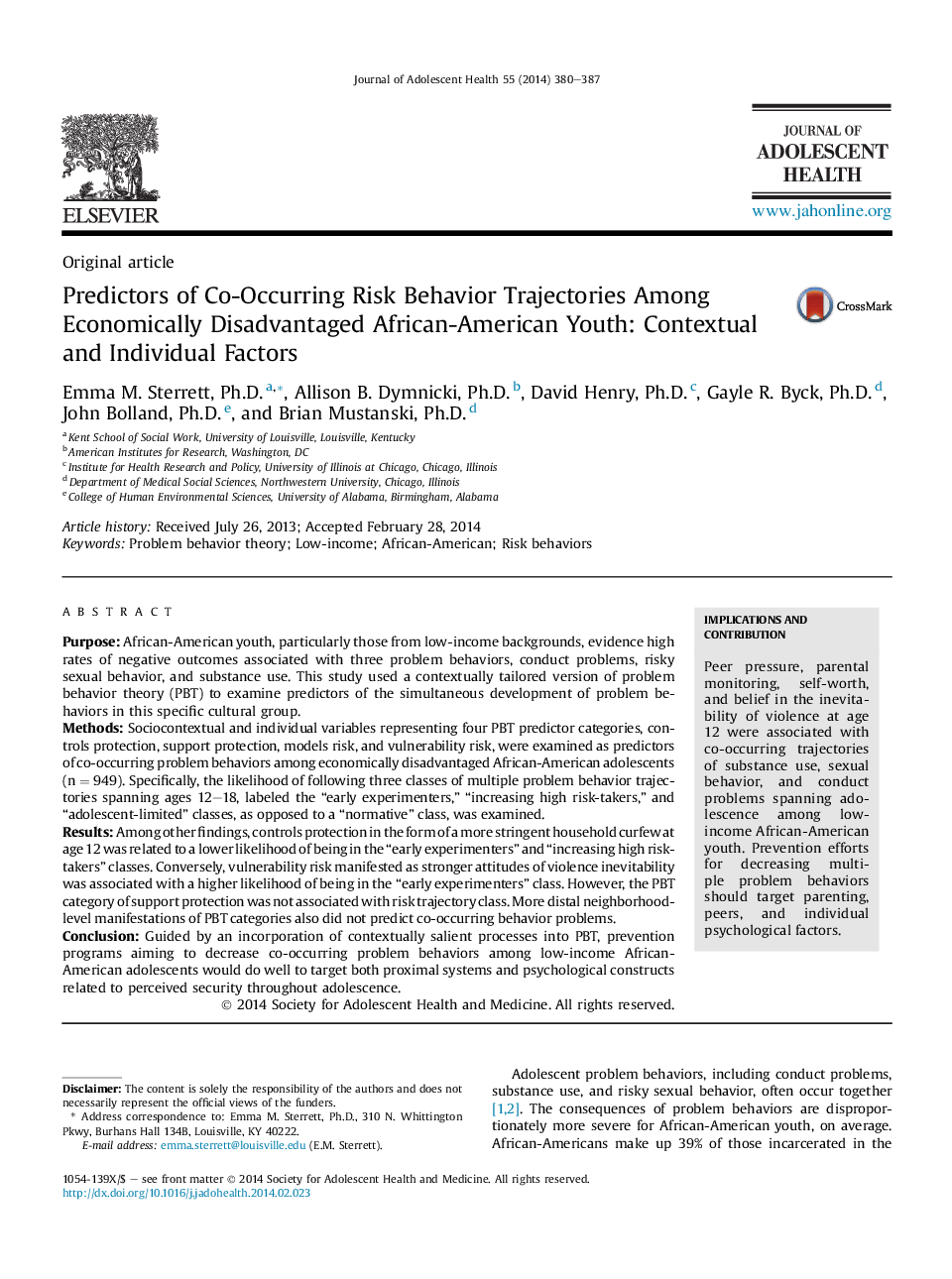| Article ID | Journal | Published Year | Pages | File Type |
|---|---|---|---|---|
| 1078456 | Journal of Adolescent Health | 2014 | 8 Pages |
PurposeAfrican-American youth, particularly those from low-income backgrounds, evidence high rates of negative outcomes associated with three problem behaviors, conduct problems, risky sexual behavior, and substance use. This study used a contextually tailored version of problem behavior theory (PBT) to examine predictors of the simultaneous development of problem behaviors in this specific cultural group.MethodsSociocontextual and individual variables representing four PBT predictor categories, controls protection, support protection, models risk, and vulnerability risk, were examined as predictors of co-occurring problem behaviors among economically disadvantaged African-American adolescents (n = 949). Specifically, the likelihood of following three classes of multiple problem behavior trajectories spanning ages 12–18, labeled the “early experimenters,” “increasing high risk-takers,” and “adolescent-limited” classes, as opposed to a “normative” class, was examined.ResultsAmong other findings, controls protection in the form of a more stringent household curfew at age 12 was related to a lower likelihood of being in the “early experimenters” and “increasing high risk-takers” classes. Conversely, vulnerability risk manifested as stronger attitudes of violence inevitability was associated with a higher likelihood of being in the “early experimenters” class. However, the PBT category of support protection was not associated with risk trajectory class. More distal neighborhood-level manifestations of PBT categories also did not predict co-occurring behavior problems.ConclusionGuided by an incorporation of contextually salient processes into PBT, prevention programs aiming to decrease co-occurring problem behaviors among low-income African-American adolescents would do well to target both proximal systems and psychological constructs related to perceived security throughout adolescence.
